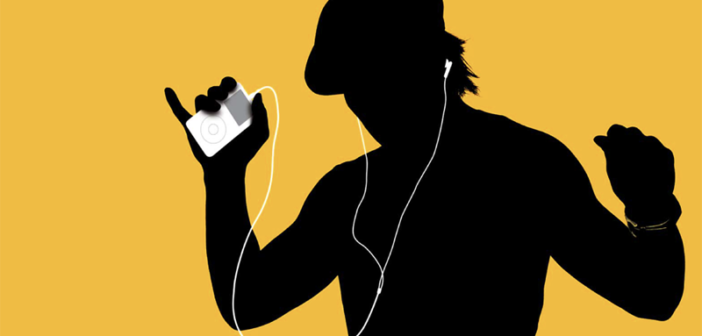We take for granted the portability of music listening in 2022, with the majority of music now being consumed via streaming services like Spotify, YouTube or Apple Music. But back in the early 2000s, this was no more than a novelty. Portable Music Players, like the Rio PMP300, had already hit the market in the late 90s, but with only a measly 32MB in storage space, you would be limited to roughly eight songs at a very low playback quality. And of course, the music you were installing onto that device was unlikely to have been downloaded legally, most likely from Napster, and the unprecedented wave of piracy that followed was beginning to take its toll on physical music sales worldwide.

Credit: Aaron Logan/Apple
Enter Apple’s iPod. By today’s standards, the device would not win any awards for its form factor – it was heavy and thicker than a deck of cards, but for the early 2000s it wasn’t too bad. It could still fit comfortably in your front pocket. The iPod was otherwise a near-perfectly designed device. You had the classic scroll wheel interface replacing the clunky controls of previous MP3 players on the market. It seamlessly connected with iTunes, an easy-to-use music library and CD burning tool (the Store would follow in 2003). Most importantly, it looked cool and stood out from the gray scale palette of devices like the Rio – it became the first piece of ‘Noughties’ tech to be seen as a ‘status symbol’ and a must-have device. However, the main selling point was the 4GB of storage space, and as the marketing tagline read, it could fit ‘1000 songs in your pocket’.
Finally, you were able to store your entire music library on one device, and take it anywhere you go for instantaneous recall and playback of any track. Perhaps you may want to press Shuffle and randomise your entire library, or create a playlist of your favourite tracks? The iPod is responsible for normalising these features for consumers, that would form an integral part of the streaming services that would follow later.
The iPod became a cultural icon, and one that came to define the Noughties.
The device itself became a cultural icon, and one that came to define the Noughties for a lot of people. The iconic ‘silhouette’ ads, featuring iPod users over brightly coloured backgrounds grooving to all sorts of genres, is a key reason for its initial take-up and induction into popular culture. There is something about this ad that just screams the Noughties; it is a bold statement and evokes a sense of freedom and ‘freshness’ that the new millennium seemed to bring. Apple were not just selling a product, like a Macintosh Computer, but rather (in their own words) ‘selling an emotion’. The iPod was an empowering product in itself, breaking the shackles tying music listeners to physical media while also ensuring artists get paid for their IP through its integration with Apple’s legal iTunes Store.
For the music industry, the iPod was a lifeline: an industry gripped in a piracy crisis that was afraid of embracing the digital age soon learned that online music stores like the iTunes Store can produce profit. On May 10th 2022, it was announced that the iPod brand would be discontinued in favour of Apple Music. This does not take away from legacy of the device however, as the main principles of its design live on in virtually every music product available to us today. It has truly earned its place in music history.





